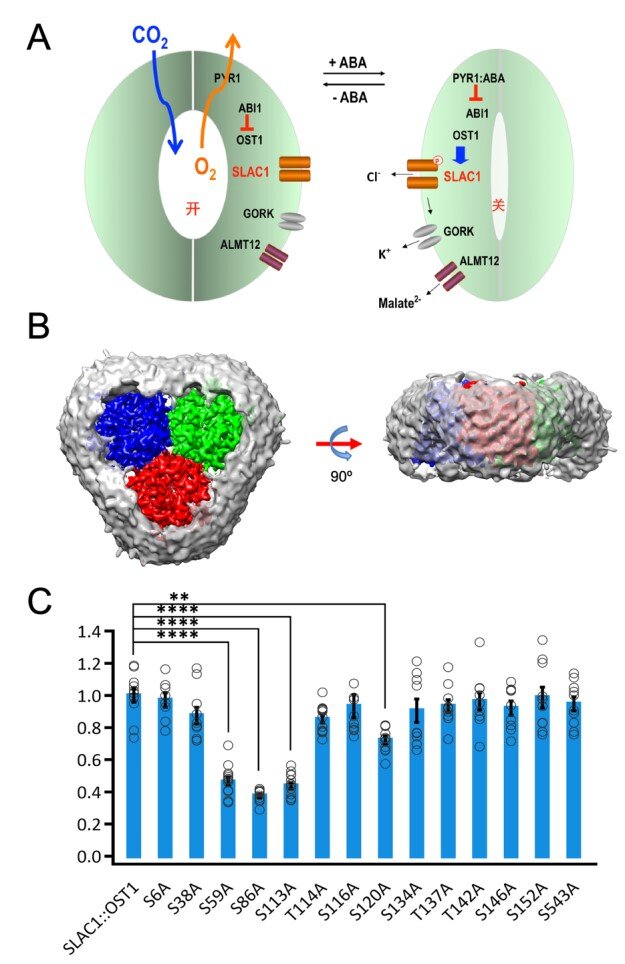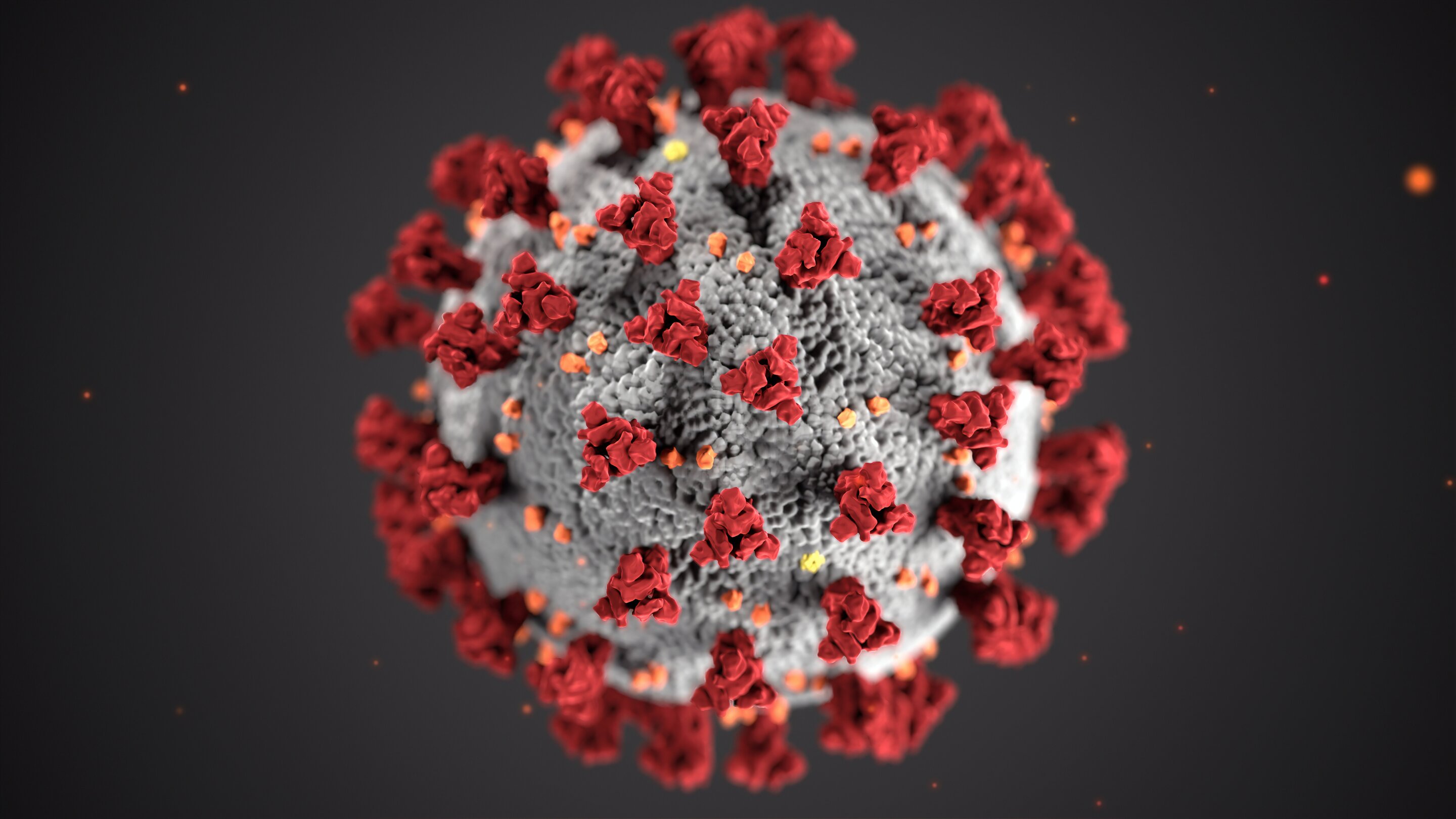#Structural study gives insight into how plants keep their ‘mouths’ shut

“#Structural study gives insight into how plants keep their ‘mouths’ shut”

Stomata, formed by a pair of kidney-shaped guard cells, are tiny pores in leaves. They act like mouths that plants use to ‘eat’ and ‘breathe.’ When they open, carbon dioxide (CO2) enters the plant for photosynthesis and oxygen (O2) is released into the atmosphere. At the same time as gases pass in and out, a great deal of water also evaporates through the same pores by way of transpiration.
These ‘mouths’ close in response to environmental stimuli such as high CO2 levels, ozone, drought and microbe invasion. The protein responsible for closing these ‘mouths’ is an anion channel, called SLAC1, which moves negatively charged ions across the guard cell membrane to reduce turgor pressure. Low pressure causes the guard cells to collapse and subsequently the stomatal pore to close down.
As part of a collaborative effort with scientists at Columbia University, researchers at the Institute of Genetics and Developmental Biology of the Chinese Academy of Sciences (CAS) have uncovered the atomic structure of SLAC1 using single particle cryo-electron microscopy (cryo-EM). This structure shows that the SLAC1 channel is normally in a closed state, with two spring-loaded phenylalanyl residues in strained conformations that block the pore and prevent anions from passing through them.
Environmental factors affect channel activity by controlling SLAC1 phosphorylation. By using a two-electrode voltage clamp technique, the scientists discovered multiple on switches in the SLAC1 channel. When phosphate attaches to the channel, its structure shifts and opens, allowing anions to flow freely. As a result, turgor pressure drops and the stomata close.
However, the scientists discovered by using a two-electrode voltage clamp technique that the SLAC1 channel has multiple on switches. “These are turned on by environmental factors that control SLAC1 phosphorylation. Specifically, when phosphate attaches to the channel, its structure shifts and opens, allowing anions to flow freely. As a result, turgor pressure drops and the stomata close.”
These findings will help scientists understand how plants respond to the environmental changes facing our planet, such as drought and escalating levels of CO2 and ozone. Deep insight into the mechanism of SLAC1 control of stomatal pores will be valuable for designing drought-tolerant or water-efficient plant cultivation.
Why cereal crops are better
Ya-nan Deng el al., “Structure and activity of SLAC1 channels for stomatal signaling in leaves,” PNAS (2021). www.pnas.org/cgi/doi/10.1073/pnas.2015151118
Citation:
Structural study gives insight into how plants keep their ‘mouths’ shut (2021, April 26)
retrieved 26 April 2021
from https://phys.org/news/2021-04-insight-mouths.html
This document is subject to copyright. Apart from any fair dealing for the purpose of private study or research, no
part may be reproduced without the written permission. The content is provided for information purposes only.
If you liked the article, do not forget to share it with your friends. Follow us on Google News too, click on the star and choose us from your favorites.
For forums sites go to Forum.BuradaBiliyorum.Com
If you want to read more Like this articles, you can visit our Science category.




